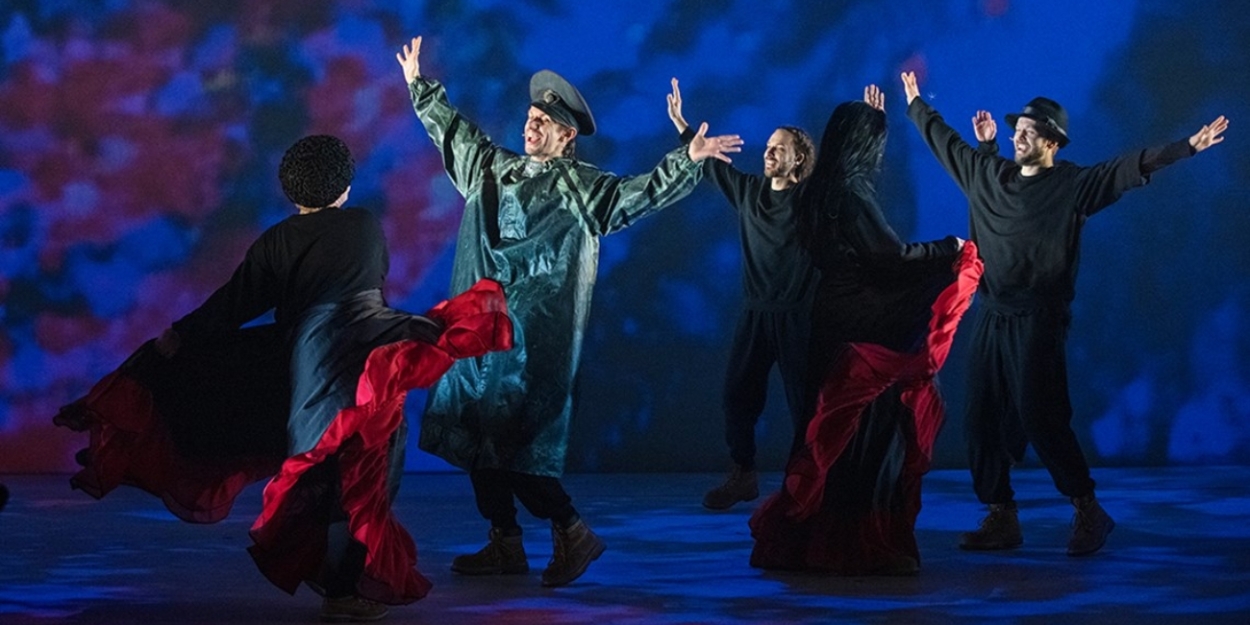Review: DOGS OF EUROPE – ADELAIDE FESTIVAL 2023 at Dunstan Playhouse, Adelaide Festival Centre
A phenomenal piece of highly relevant theatre.

Reviewed by Barry Lenny, Thursday 2nd March 2023.
My first review for this year's Adelaide Festival was the powerful production, Dogs of Europe, by Belarus Free Theatre. The work, translated by Daniella Kaliada and co-directed by Nicolai Khalezin and Natalia Kaliada, is based on the 2017 novel, banned in Belarus, by Alhierd Baсharevič, a political exile, as are all of the members of Belarus Free Theatre, escaping the oppressive regime of President Alexander Lukashenko. The production is in Belarusian, with English subtitles.
In the face of Vladimir Putin's attempted invasion, systematic destruction of Ukraine, and annihilation of its citizens, supported by the current Belarus government, it couldn't be more relevant. The press release tells us, "The dystopian story in Dogs of Europe moves from 2019 to 2049 - a time when Russia has taken over several countries to form a new European super-state under the control of a secretive and brutal regime in which individual rights have been trampled." How many Russian dissenters have now died by falling down stairs or out of windows?
The production follows the book, opening with a prologue, followed by a series of scenes, each relating to one of the chapters, and introduced with the name of the chapter projected in large letters onto the back wall/screen. The novel heads towards 1000 pages over 20 or so chapters, published in six parts, covering the six stories that eventually link together. The stage is bare, with pieces of scenery moved in and out as needed, and with video projections and English subtitles projected onto the screen.
A young man from Minsk buys an inexpensive island, a toxic waste zone, invents his own language, and captures a grandmother to be his wife. This is, after all, a piece of absurdist theatre. While this prologue plays out on stage, the screen takes us into a computer game as we move around inside a building.
By 2049, Europe is divided by a wall between The New Reich, under the oppressive Russian regime, and the League of European States, the free world. A German investigator seeks to find the identity of an unnamed poet, found dead in a rundown hotel room. His search leads him to a number of secretive bookshops; books are banned. Onstage, books are burned. Books and languages are a constant theme running through the work. A boy, Nauchun, loves a goose. Another man, Kakouski, has a carved wooden pistol with which he threatens people. There is murder, rape, and impersonal interaction between the characters. A time capsule is buried in 2019 as a school project, to be dug up in 2049 by the investigator. The separate stories, which seem at first to be unrelated, are drawn together, but there are still loose ends, unexplained parts of the narrative, just like real life.
An actor takes running around in circles to a new level, as you'll see at the intermission, before taking on the role of Teresius Skima, the detective who, with only a book of poems in an indecipherable language, and a feather, both found on the body, sets out to try to identify the dead man.
The play is filled with metaphor, allegory, and symbolism, with layer after layer to be absorbed and interpreted by the audience. The choreography is wide-ranging, almost military at times, with fight scenes, and rigid movements, then at another time it is flowing, then in another scene, it is filled with great energy. The music carries the action forward. The visuals add more layers.
The production features a large ensemble: Pavel Haradnitski, Aleh Sidorchyk, Yuliya Shauchuk, Raman Shytsko, Maryia Sazonova, Stanislava Shablinskaya, Aliaksei Saprykin, Ilya Yasinski, Kateryna Vostrikova, Mitya Savelau, Kiryl Kalbasnikau, and Darya Andreyanava.
There is a large group of people involved in creating the technical side of this production, too. The set and costume design is by Nicolai Khalezin, and the lighting and projection design is by Richard Williamson, with Roman Liubyi as the filmmaker, animator, and video designer, and Beatrice Banyionite as the associate lighting and projection designer. Choreography is by Maryia Sazonova and the videographer is Mikalai Kuprych. The original music is played live by Mark & Marichka Marczyk, she at the keyboard on the audience's left of the stage, also providing vocals, and he at his mixing desk far right, with his violin. They leave their positions at times to join the ensemble, adding vocals and percussion.
There is both a visual and aural overload, almost an assault on the senses, placing demands on the audience to keep up, and making the three hours seem much shorter due to the unrelenting pace. It is a phenomenal piece of theatre that should not be missed. Its current relevance adds to its importance.
After the bows, and the standing ovation, with the cast holding the flags of Belarus and Ukraine, and a banner of support, Natalia Kaliada, spoke passionately about the war, of the involvement of one of their members, who went to fight for his country in Ukraine, of the connection of others in the ensemble to Ukraine, and offered a warning of the close proximity of Russian supporter, China, to Australia.
We were left with the cry, "Slava Ukraini!" (Glory to Ukraine!) ringing in our ears, a slogan that originated during the Ukrainian War of Independence (1917 to 1921), and is once again on the lips of all Ukrainians and their supporters.
Photography, Linda Nylind.
Reader Reviews

Videos

